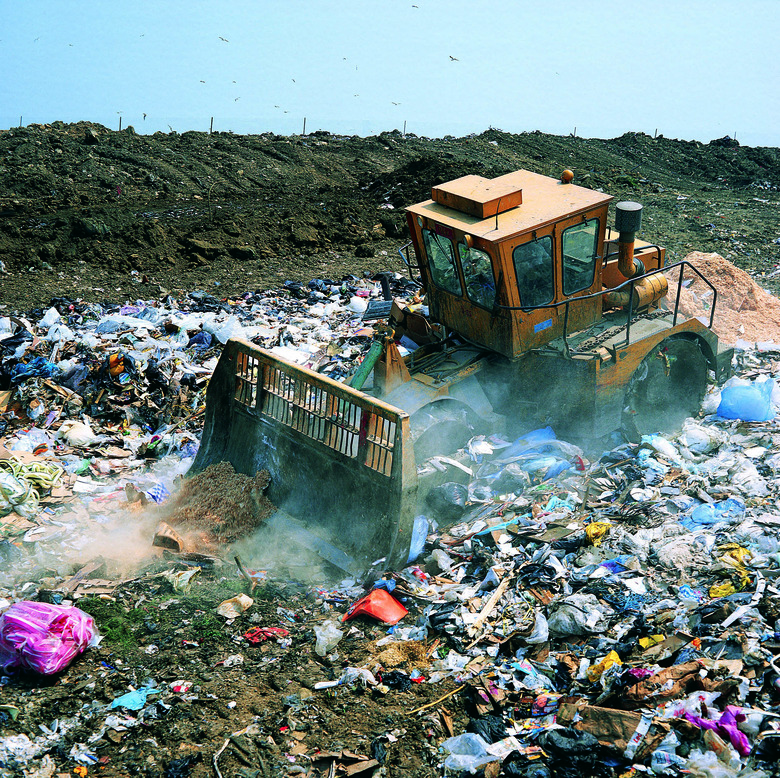Landfill Pollution & Water Pollution
The EPA estimates that 250 million tons of household waste, or more than 1,300 pounds of trash per every person in America, was disposed in 2011. Though humans rarely see it, much of this trash gets deposited in landfills which use a complex system of liners and waste treatment to keep the liquid form of decomposing trash, leachate, from contaminating natural resources. Understanding the different types of water pollution that can come from landfills is important for knowing how take appropriate steps to limit this contamination.
Direct Leachate Contamination
Direct Leachate Contamination
The most serious form of water pollution from landfills is direct leachate contamination, considered a major environmental and human-health hazard. Leachate is a highly odorous black or brown liquid that commonly contains heavy metals, such a lead, and volatile organic compounds or VOCs. This form of contamination is rare because modern landfills contain leachate treatment systems and thick protective barriers to prevent leachate from coming in contact with ground or surface water.
Waste Transportation Contamination
Waste Transportation Contamination
Landfills are often developed away from large areas of residence in places such as industrial zones, which means there is often a long process for transporting waste from its source to a landfill. Most U.S. states carefully regulate waste transportation, but trucks leaking quantities of solid and hazardous wastes may leak small quantities during transport or be involved in accidents that cause a release of waste material into surface water. The U.S. Department of Transportation reports that more than 5,000 hazardous materials trucks are involved in accidents every year. In 2013, a truck carrying hazardous sewage sludge to a landfill site in Colorado spilled an estimated 22,000 pounds of waste in the vicinity of a nearby stream; response crews struggled to clean up the spill before it reached the water source.
Stormwater Runoff Contamination
Stormwater Runoff Contamination
Landfills commonly cover hundreds of acres of land, which means large quantities of rain water and snow melt will run down landfills and collect in large stormwater basins. Unlike leachate treatment systems, rainwater basins only collect water, and once the basins are full the water drains into the surrounding environment. Environmental technicians tests this stormwater throughout the year, but the system's lack of secondary treatment presents the possibility for water pollution. The National Resources Defense Council argues that hazardous wastes can also collect in these drainage basins due to improper containment of waste on landfill surfaces. In 2011, a San Jose landfill was fined more than $800,000 for leaking leachate condensate into a nearby stream from stormwater basins.
Overpopulation of Birds
Overpopulation of Birds
Landfills are known for drawing in large quantities of bird species that feed on newly disposed trash before it is buried. At landfill sites along major water bodies, these birds can infest those bodies of water at night causing secondary contamination from animal byproducts. The overpopulation of birds in water bodies has been known to create dangerous bacteria formations and promote unhealthy levels of plant growth in water ecosystems.
Cite This Article
MLA
King, Justin. "Landfill Pollution & Water Pollution" sciencing.com, https://www.sciencing.com/landfill-pollution-water-pollution-15895/. 24 April 2017.
APA
King, Justin. (2017, April 24). Landfill Pollution & Water Pollution. sciencing.com. Retrieved from https://www.sciencing.com/landfill-pollution-water-pollution-15895/
Chicago
King, Justin. Landfill Pollution & Water Pollution last modified March 24, 2022. https://www.sciencing.com/landfill-pollution-water-pollution-15895/
